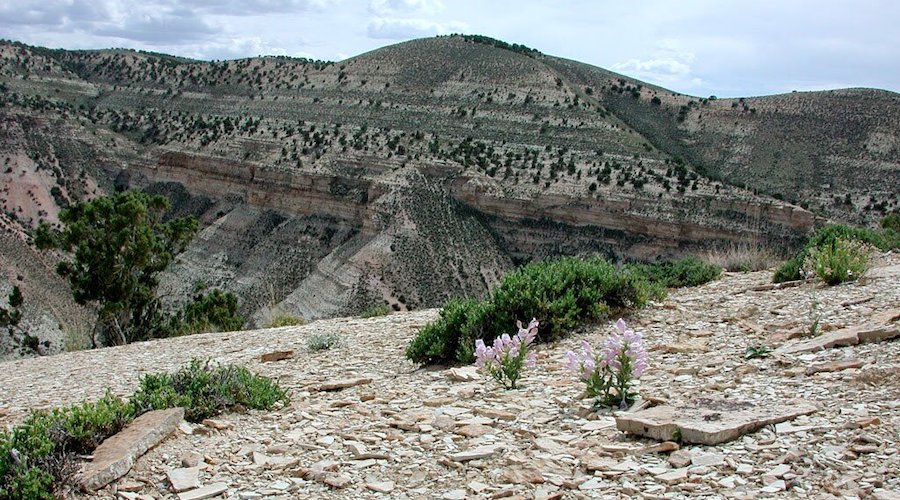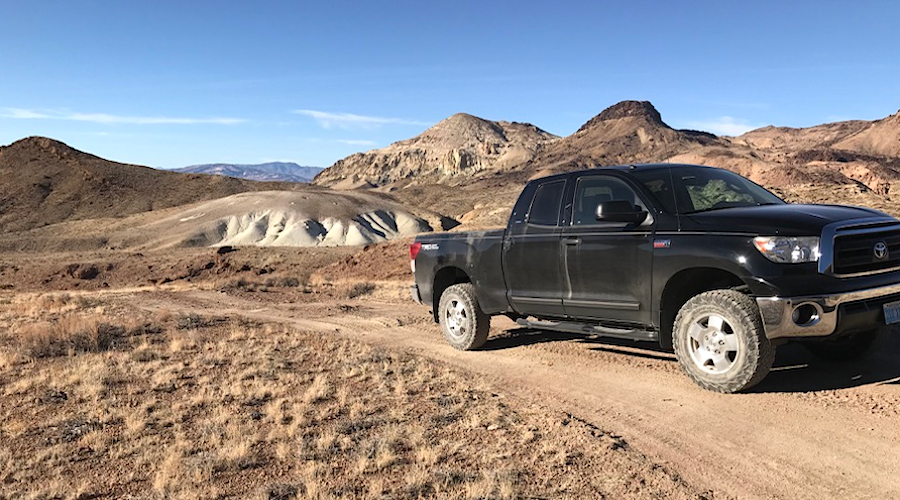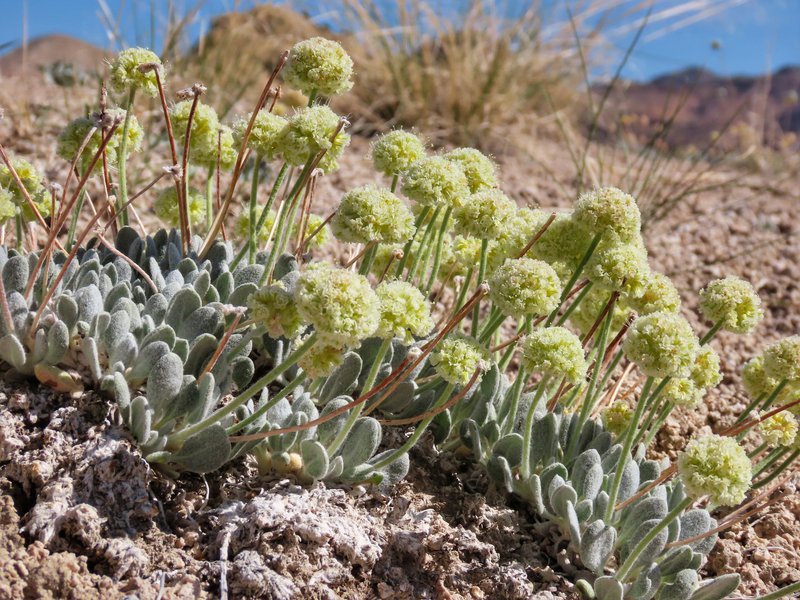Staff Writer | December 20, 2022 |

Colorado Plateau. (Photo by Robert Fitts, Utah State University).
Researchers at Utah State University are mapping out strategies that allow balancing the emerging demand for mining and energy development projects on the Colorado Plateau and the survival of the area’s rare plant populations.

In a paper published in the journal Land, the scientists explain that the vast stretches of desert in southeastern Utah and southwestern Colorado are home to rare plants like milkvetch, beardtongue penstemon and sclerocactus, which manage to survive under the harshest of environmental conditions and, thus, are something of an ecologically niched miracle.
To ensure that at least 30% of these plant species can be protected so their respective communities can hold on to the potential for long-term survival, the research team developed a new method to model how rare plants are distributed across the Colorado Plateau, one that includes strategies for structuring energy projects to optimize the use of space to minimize their impact.
The model doesn’t work in an ecological vacuum—it considers factors like land ownership, the potential for energy extraction at a site, and biodiversity.
“The key to finding workable solutions in these kinds of circumstances is to think both like an ecologist and an energy developer, and to work within that space,” Thomas Edwards, co-author of the study, said in a media statement. “Conservation planning frameworks don’t always incorporate real-world limiting factors such as financial considerations, business risk and land ownership. But those considerations are essential for finding workable solutions. Reality-based strategies require the consideration of all these things.”
In his view and that of his colleagues, it is important to use space wisely and understand that no solution can completely meet objectives for both plant conservation and energy extraction. However, where there is direct conflict, their model can help land managers accommodate a level of balance.
The team identified and mapped specific locations where conservation actions to protect plant communities would get the most bang for their buck. They found the minimum number of sites required to cover 30% of each species at the lowest financial cost to developers. By optimizing and minimizing the number of land units slated for conservation, they were able to allow more areas to open for energy development and exploration.
This approach might require developers to move planned roads, build around certain protected areas, or drill horizontally in some places to protect a high-priority location, at some additional cost. But the model acknowledges that energy development in the area is headed toward the inevitable, and accommodates that.
“It’s not a perfect scenario,” Edwards said, “but this approach provides opportunities for a best-case scenario given the reality of circumstances.”
Ioneer’s lithium-boron project in Nevada moves into final permitting stage
Cecilia Jamasmie | December 19, 2022 |

Rhyolite Ridge is the only known lithium-boron deposit in North America.
Cecilia Jamasmie | December 19, 2022 |

Rhyolite Ridge is the only known lithium-boron deposit in North America.
(Image courtesy of ioneer.)
Australia-based ioneer (ASX: INR)(Nasdaq: IONR) said on Monday its flagship Rhyolite Ridge lithium-boron project in Nevada has advanced into the final stage of federal permitting.

The company said the decision by the US Bureau of Land Management (BLM) to publish a Notice of Intent (NOI) in the Federal Register, was a major milestone towards completing the permitting for the proposed mine.
“This marks a major milestone toward the completion of the National Environmental Policy Act (NEPA) process and approval of the project’s plan of operations,” it said in the statement.
The plan of operations is the foundational permitting document for the project and will become the basis for compliance during operations and closure, the company said.
ioneer has faced some setbacks when trying to obtain federal permits because public lands near its Rhyolite Ridge asset are home to the endangered wildflower Tiehm’s buckwheat.
The US Fish and Wildlife Service recently designated the pale yellow flower as an endangered species, which the company welcomed as, it said, the decision provided “further clarity for the path forward for the development of the Rhyolite Ridge project.”
The company had submitted in July a revised plan of operations for the project that will protect the wildflower while the mine is being built.
Australia-based ioneer (ASX: INR)(Nasdaq: IONR) said on Monday its flagship Rhyolite Ridge lithium-boron project in Nevada has advanced into the final stage of federal permitting.

The company said the decision by the US Bureau of Land Management (BLM) to publish a Notice of Intent (NOI) in the Federal Register, was a major milestone towards completing the permitting for the proposed mine.
“This marks a major milestone toward the completion of the National Environmental Policy Act (NEPA) process and approval of the project’s plan of operations,” it said in the statement.
The plan of operations is the foundational permitting document for the project and will become the basis for compliance during operations and closure, the company said.
ioneer has faced some setbacks when trying to obtain federal permits because public lands near its Rhyolite Ridge asset are home to the endangered wildflower Tiehm’s buckwheat.
The US Fish and Wildlife Service recently designated the pale yellow flower as an endangered species, which the company welcomed as, it said, the decision provided “further clarity for the path forward for the development of the Rhyolite Ridge project.”
The company had submitted in July a revised plan of operations for the project that will protect the wildflower while the mine is being built.

Tiehm’s buckwheat (Eriogonum tiehmii)
Photo by Patrick Donnelly, Center for Biological Diversity.
“We understand the Rhyolite Ridge project is the first lithium project to be issued a Notice of Intent under the Biden administration,” executive Chairman James Calaway said.
“We see this as a significant step toward ensuring a strong domestic supply of critical minerals and strategic materials necessary for development of a domestic battery supply chain essential to the electrification of transportation in the US,” he noted.
ioneer inked a supply deal in July with Prime Planet Energy & Solutions, a battery joint venture between Toyota and Panasonic, to provide 4,000 tonnes of lithium carbonate per year in the first five years of production.
It also signed a deal with Ford for 7,000 tonnes of lithium carbonate annually for five years. ioneer aims to produce about 21,000 tonnes of lithium a year in Nevada starting in 2025.
Rhyolite Ridge is the only known lithium-boron deposit in North America and one of only two known such deposits in the world.
“We understand the Rhyolite Ridge project is the first lithium project to be issued a Notice of Intent under the Biden administration,” executive Chairman James Calaway said.
“We see this as a significant step toward ensuring a strong domestic supply of critical minerals and strategic materials necessary for development of a domestic battery supply chain essential to the electrification of transportation in the US,” he noted.
ioneer inked a supply deal in July with Prime Planet Energy & Solutions, a battery joint venture between Toyota and Panasonic, to provide 4,000 tonnes of lithium carbonate per year in the first five years of production.
It also signed a deal with Ford for 7,000 tonnes of lithium carbonate annually for five years. ioneer aims to produce about 21,000 tonnes of lithium a year in Nevada starting in 2025.
Rhyolite Ridge is the only known lithium-boron deposit in North America and one of only two known such deposits in the world.
No comments:
Post a Comment